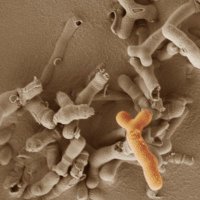

Two proud PhD supervisors today Hall Lab & Stephen Robinson (he/him) 🏳️🌈! Huge congrats to nteng on passing her viva with only minor corrections 🥳
Nancys Big C Cancer Charity PhD work was on #microbiome & #breastcancer with exciting outputs tbc..!
Thanks to examiners Alison Mather & Kaitlin Hazel Wade (she/her)!










Great to see nteng's #IJSEM 's Microbiology Society paper now out - describing a new genus and new species from the human gut #microbiota . For more details see Nancys nice thread below! 👇💩🦠🧬💻🧫

(3/9) LH1062 was possibly a novel genus so we wanted the *best*. And the QIB Core Sequencing delivered, providing 1 beautiful contig for this bacterium. Genomic investigations suggested it belonged to the family Erysipelotrichaceae.

(9/9) Thank you to everyone at Quadram Institute and TU München for the help. Special shout out to Raymond Kiu Hall Lab ChristianZenner QIB Core Sequencing and Stephen Robinson (he/him) 🏳️🌈 for the support.


Hall Lab Stephen Robinson (he/him) 🏳️🌈 nteng Big C Cancer Charity Alison Mather Congrats again, nteng! Well deserved 😊

Attending #microbio23 ? Then swing by today's poster session from 4.30-5.40pm to find out about #breastcancer #microbiome with nteng P224, #Bifido #Membranevesicles with Anne Jordan P242 & optimised skin #microbiome methods with Iliana Rosa Serghiou M.Sc B.Sc (Hons) P289. 🧬💩🤱💻📊

nteng Hall Lab Stephen Robinson (he/him) 🏳️🌈 Quadram Institute Best of luck in your new position!

